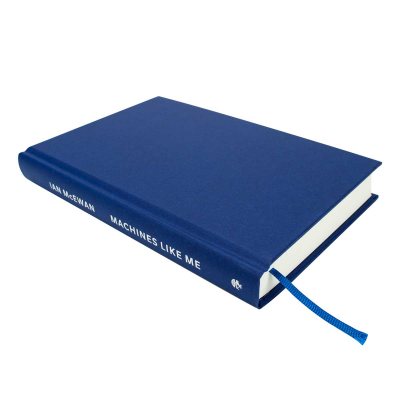
Charlie would prefer an Eve, but they have all been snapped up, so he has to make do with an Adam, whom he brings home and unboxes.

For reasons that are never entirely clear, only 25 of the devices are available, 13 Adams and 12 Eves, in a variety of ethnicities. He explains that he is only able to afford his extravagant purchase thanks to a recent inheritance from his mother. One of the first people to part with £86,000 is the novel’s narrator, self-confessed AI nerd Charlie Friend: “Robots, androids, replicates were my passion,” he informs us.Ĭharlie is 32 and lives alone in a small flat in Clapham, south London, where he plays the stock market from a home computer without much success. His pioneering work in artificial intelligence has led to a series of technological breakthroughs: the result is that the latest and most expensive device in consumer electronics is “a manufactured human with plausible intelligence and looks, believable motion and shifts of expression”. Instead of having been hounded to death for his homosexuality, the scientist Alan Turing is thriving and lauded. More pertinently for the plot, another marked difference from history is that the United Kingdom of this 1982 is precociously computerised. “Only the Third Reich and other tyrannies decided policies by plebiscites and generally no good came from them,” the narrator reminds the inhabitants of post-referendum Britain. The counterfactual 1982 of the novel plays variations on our historical record and contains clear allusions to the present. This political and social upheaval feels like both reminiscence and prophecy. The humiliation of defeat forces Margaret Thatcher from office, brings a very different politician to power, and triggers the country’s unexpected departure from Europe. A devastating Argentinian attack ends the war abruptly and the Falklands become Las Malvinas.

In the 1982 of the novel, the British navy sails from Portsmouth with calamitous results. Machines Like Me, Ian McEwan’s new novel, also turns in part on the Falklands conflict, eternalising a version of that year’s events, though in the book’s fictional world things have turned out rather differently.

Outside Port Stanley, on treeless uplands whose names ring distant bells – Goose Green, Mount Harriet, Tumbledown – the conflict is still unofficially memorialised by chunks of crashed war planes and the wires of field telephones from a pre-digital age. B y a strange twist of fate, I read this book while on a visit to the Falkland Islands, where the British victory over Argentina in the 1982 war feels as though it might have happened last week.


 0 kommentar(er)
0 kommentar(er)
